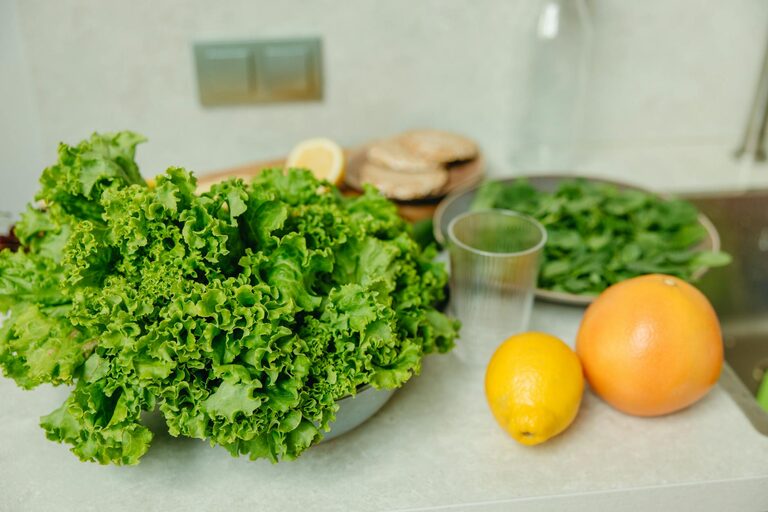
How to Plan Balanced Meals Without Stress: A Simple Guide
Planning balanced meals can sometimes feel like a daunting task, especially with busy schedules and a crowded grocery store aisle. However, creating nourishing, well-rounded meals doesn’t have to be stressful or complicated. With a few simple strategies, you can enjoy wholesome meals that keep you satisfied and energized throughout the day.
In this guide, we’ll walk you through practical steps to plan balanced meals without the hassle, helping you build a sustainable habit that fits your lifestyle.
What Is a Balanced Meal?
Before diving into meal planning, it helps to understand what makes a meal balanced. A balanced meal typically includes:
– Protein: Helps build and repair tissues and keeps you full longer (e.g., lean meats, beans, tofu, fish)
– Carbohydrates: Provides energy (e.g., whole grains, fruits, vegetables)
– Healthy fats: Supports brain health and nutrient absorption (e.g., nuts, seeds, olive oil)
– Fiber: Aids digestion and promotes fullness (e.g., vegetables, fruits, whole grains)
– Vitamins and minerals: Support overall body function (from a variety of colorful fruits and vegetables)
The goal is to have a variety of these elements in each meal to fuel your body well.
Step 1: Start with Simple Meal Frameworks
You don’t need complicated recipes to have balanced meals. Start with a simple framework:
– Half your plate vegetables or fruits
– One quarter protein
– One quarter whole grains or starchy vegetables
– A small portion of healthy fats (like a drizzle of olive oil or a few nuts)
This visual approach helps keep your meals balanced without second-guessing.
Step 2: Plan Ahead with a Weekly Menu
Planning your meals for the week helps reduce last-minute stress and unhealthy choices. Here’s how to do it:
- **Create a template**: Set up a simple grid with days of the week and meals (breakfast, lunch, dinner).
- **Use reliable base meals**: Pick 3-4 go-to balanced meals you enjoy. Rotate these throughout the week.
- **Incorporate leftovers**: Plan meals that generate leftovers for another day to save time.
- **Check your schedule**: For busy days, plan quick or grab-and-go options like salads with pre-cooked protein.
Step 3: Keep a Well-Stocked Pantry and Fridge
Having essentials on hand makes it easier to assemble balanced meals. Here’s a starter list:
– Grains: brown rice, quinoa, whole wheat pasta
– Proteins: canned beans, eggs, frozen chicken breasts, tofu
– Vegetables: fresh or frozen spinach, carrots, bell peppers, broccoli
– Fruits: apples, bananas, berries (fresh or frozen)
– Healthy fats: olive oil, nut butters, nuts, seeds
– Herbs and spices: to add flavor without extra calories
Step 4: Batch Cook and Prep Ingredients
Spending a bit of time prepping ingredients can save time during the week.
– Cook grains in bulk and store in the fridge
– Roast a tray of vegetables for easy addition to meals
– Prepare protein in advance, such as grilling chicken or simmering beans
– Wash and chop salad greens or veggies for quick assembly
Step 5: Mix and Match Ingredients Creatively
Balanced meals don’t have to be boring. Use your prepared ingredients to mix and match:
– Grain bowls: Combine quinoa, roasted veggies, greens, and protein with a drizzle of tahini
– Stir-fries: Quickly sauté veggies with tofu or chicken and serve over brown rice
– Salads: Add leafy greens, fruit slices, nuts, cheese, and a protein source
– Wraps: Use whole wheat tortillas filled with veggies, hummus, and grilled meat or beans
Step 6: Practice Mindful Eating
Balanced meals aren’t just about ingredients; how you eat matters too.
– Eat without distractions
– Take time to chew and enjoy your food
– Pay attention to hunger and fullness cues
This approach helps you appreciate your meals and avoid overeating.
Tips to Reduce Meal Planning Stress
– Start small: Plan just one meal a day at first, then expand
– Use technology: Apps can help organize shopping lists and recipes
– Don’t strive for perfection: It’s okay if meals aren’t perfectly balanced every time
– Include your preferences: Plan meals you genuinely enjoy to stay motivated
– Ask for help: Get family or friends involved in meal preparation
Sample Balanced Meal Ideas
– Grilled salmon, quinoa, and steamed broccoli with olive oil and lemon
– Chickpea curry with brown rice and spinach
– Turkey and avocado whole wheat wrap with a side salad
– Omelet with mixed veggies and a slice of whole-grain toast
– Lentil soup with a side of mixed greens and whole grain crackers
—
Planning balanced meals is a journey, but with simple frameworks, preparation, and flexibility, it becomes manageable and enjoyable. Try incorporating these tips gradually, and you’ll find it easier to eat nutritiously while keeping stress at bay. Remember, balance is about sustainable habits more than perfection.
Happy meal planning!
